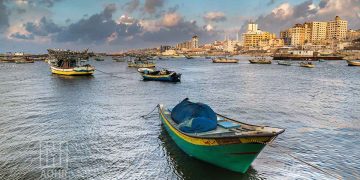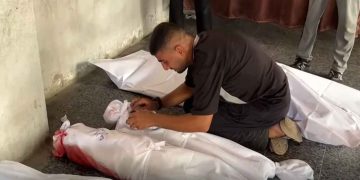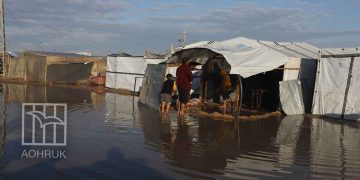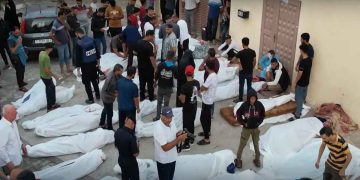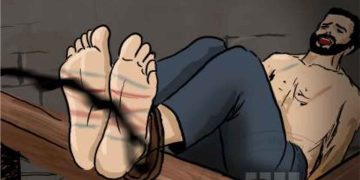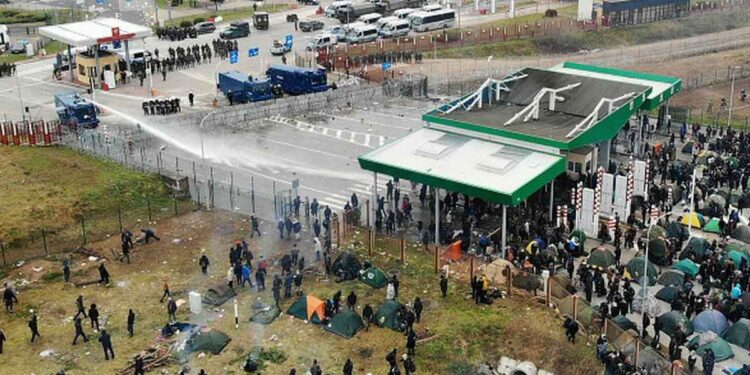On Tuesday, November 16, 2021, water cannon and teargas were fired by the Polish riot police at people forcibly attempting to cross into the European Union on the country’s border with Belarus, while dozens of men were seen throwing rocks back at the police. Video footages showed stun grenades detonating near migrants on the Belarusian side of the border provided by Belarus as claimed by Poland.
The EU governments approved sanctions against the Belarusian leader, Alexander Lukashenko the day before clashes erupted for allowing thousands of asylum-seekers from the Middle East to travel through Belarus to the border with Poland.
Poland and Lithuania have announced states of emergency that grant police sweeping powers to remove migrants and disregard their demands for refuge. NGOs were prevented from providing aid and journalists from reporting.
Last week, a Palestinian Syrian 44 years-old woman from the Niran camp was reported dead on Wednesday, November 10, at the Poland-Belarus crossing due to the freezing weather. According to another migrant who accompanied her; she has been sick for a week before transferring her to hospital where she died.
Ahmad Al-Hasan, 19, from Syria, was found dead in the Bug River in eastern Poland on 19 October. Ahmad, who could not swim, was pushed by a Belarusian soldier to the water, according to eyewitnesses.
At least 12 migrants have died during the crisis, most due to exposure, Grupa Granica, from a Polish NGO said. Doctors say they are receiving more requests from migrants in the Polish “secure zone” to treat dehydration, hypothermia and trauma from armed attacks, however Polish authorities can still expel people regardless of their medical condition.
Hundreds of individuals, mostly from Iraq and Syria, had moved from a campsite within the woods to the Kuźnica border crossing on Monday with Belarusian border guards, but were denied entry into Poland.
Reuters reported that one nine-year-old Kurdish boy, a double-amputee hoping to reach Germany for medical treatment, had been trapped in freezing conditions outdoors for eight days.




